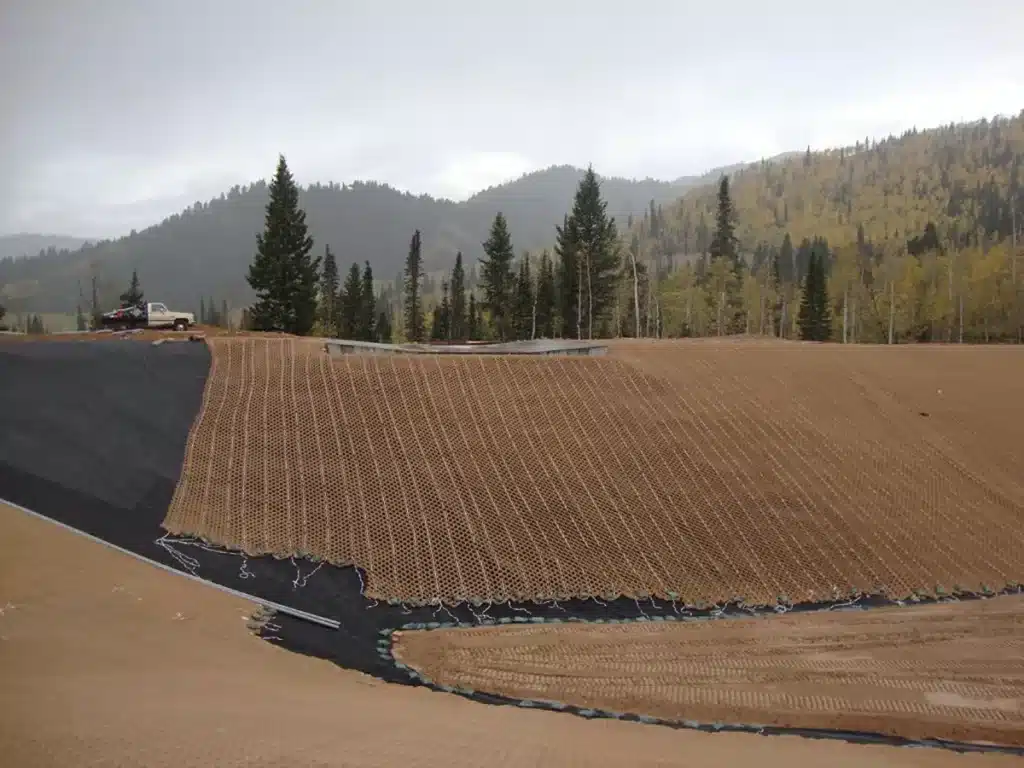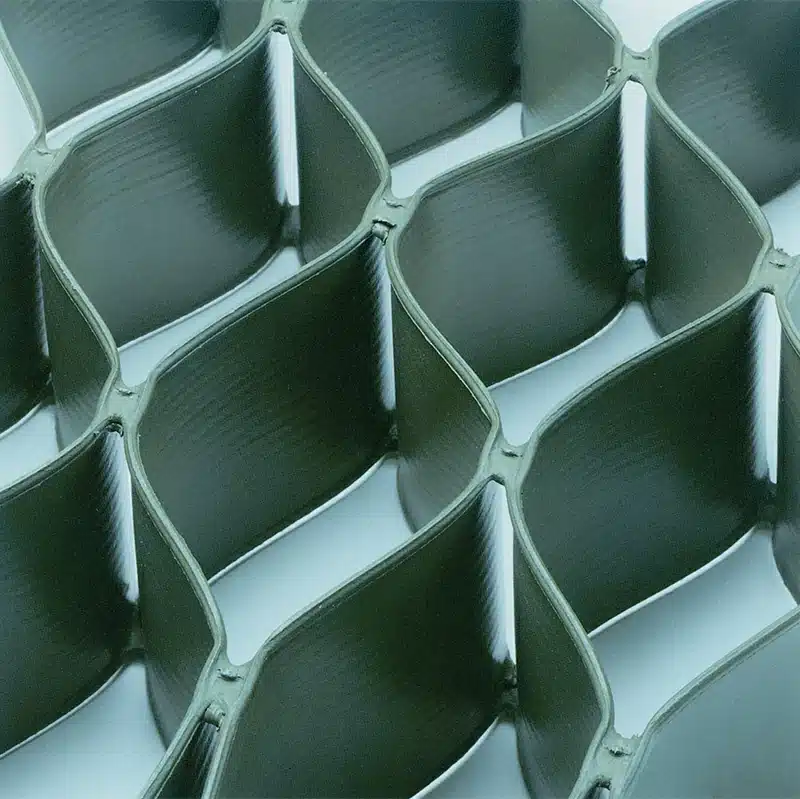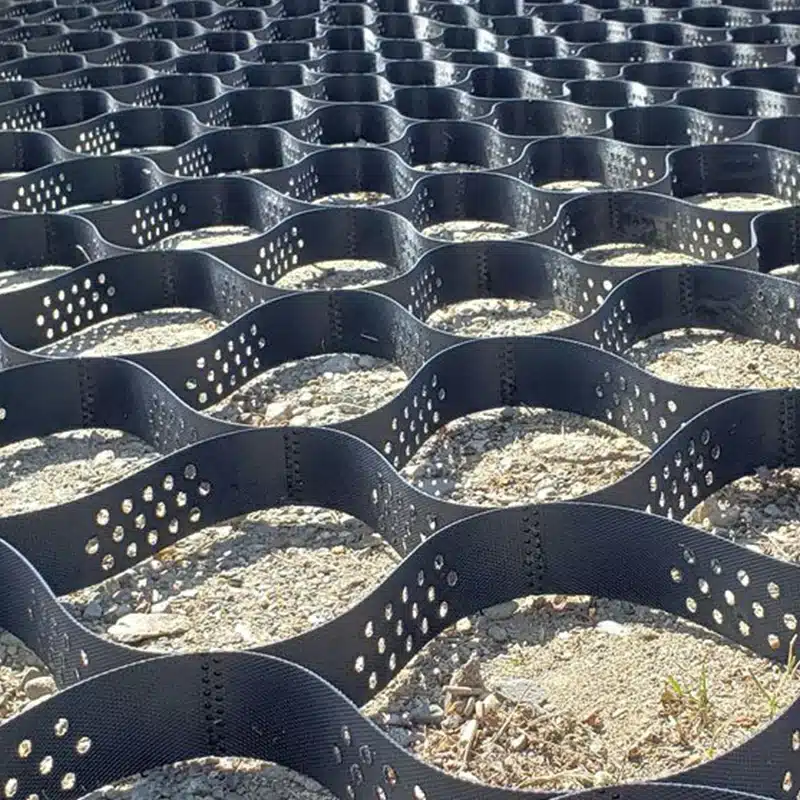+86-159 9860 6917
info@geofantex.com
geofantex@gmail.com
+86-400-8266163-44899
Geocell on slopes is a groundbreaking solution for enhancing slope stability in various applications. In this article, we explore what Geocell on slopes entails, its maximum slope capabilities, its role in slope protection, and how geogrids contribute to slope stability.

What is the Geocell on a Slope?
Geocells on slopes involve utilizing geosynthetic cellular confinement systems, often called Geocells, to fortify and secure sloping terrain. These Geocells, constructed as three-dimensional honeycomb-like structures from materials like high-density polyethylene (HDPE), offer critical support to the soil when placed on a slope. This support effectively controls erosion as the cells prevent movement of the infill, thereby minimizing the risk of landslides.
The primary purpose of these Geocells is to confine and compact soil, creating a dependable foundation. They see widespread use in road construction, mining, landscaping, and a range of civil engineering projects, effectively addressing slope stability concerns.
What is the Maximum Slope for Geocell?
The maximum slope for Geocell varies based on factors like the Geocell product, soil conditions, and intended use. Typically, Geocells are versatile and can be used on slopes with gradients ranging from mild to steep, including slopes as steep as 1:1 (45 degrees).
For gentler slopes with inclinations of 1:3 (33.33%) or less, standard Geocell products often suffice to ensure stability. However, for steeper slopes, specialized Geocell designs or reinforcement techniques may become necessary.
For the best product and design choice for your specific slope project, it’s essential to seek guidance from a geotechnical engineer or Geocell manufacturer.
What is Slope Protection with Geocells?
Slope protection with Geocells provides excellent protection for slopes against erosion through its designed expandable, strong, and cellular structure. When properly installed, Geocells acts as a barrier, effectively preventing soil particles from shifting, even in high-velocity water flow or harsh weather conditions.
You can fill Geocells with various materials like gravel, crushed stone, or vegetation, depending on the slope’s needs. These fill materials not only add weight but also prevent soil erosion, contributing to slope stability.
This slope protection method is eco-friendly, budget-friendly, and exceptionally durable, making it an ideal choice for sustainable slope management.

What is a Geogrid for Slope Stability?
Slope Grid Geocells are perfectly designed to retain embankment soil and promote the growth of natural vegetation. In addition to Geocells, another geosynthetic material used in slope stability applications is geogrid. Geogrids differ from Geocells as they are two-dimensional materials typically made from polyester or polypropylene. Their main function is to reinforce soil by enhancing its tensile strength.
Once installed within the soil, geogrids contribute to increased soil stability by evenly distributing loads, reducing lateral movement, and preventing soil from sliding down slopes. They are often used in combination with Geocells for comprehensive slope stabilization projects.
Geogrids come in various forms, including biaxial and uniaxial grids, each tailored to specific slope conditions and project requirements. These geosynthetic materials play a crucial role in enhancing slope stability and preventing erosion.
In conclusion, Geocell on slopes is a versatile solution for addressing slope stability issues. With the ability to reinforce a wide range of slope gradients and protect against erosion, Geocells and geogrids are invaluable tools in civil engineering and environmental preservation. Whether you’re involved in road construction, landscaping, or other projects requiring slope stability, consulting with experts in geotechnical engineering is essential to ensure the most effective use of these geosynthetic materials.



Get Free Sample
We’ll respond as soon as possible(within 12 hours)






















